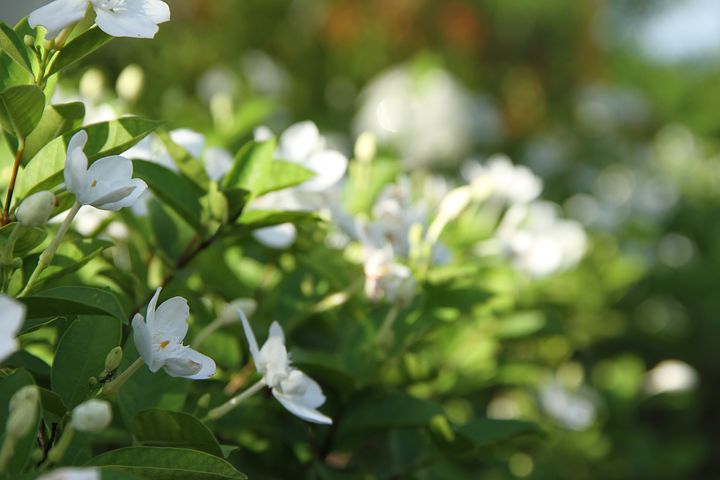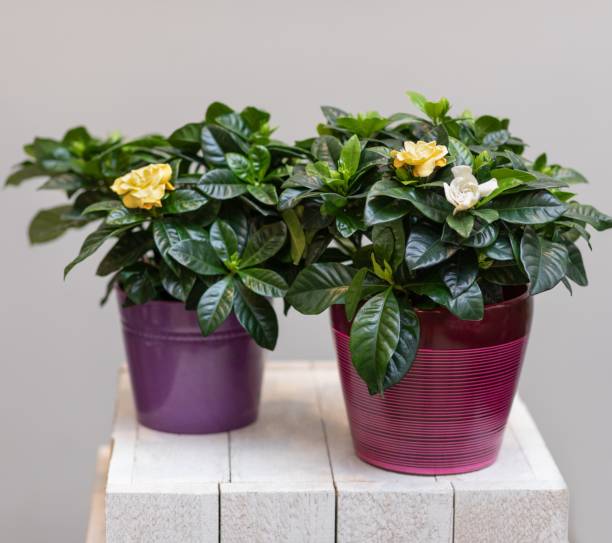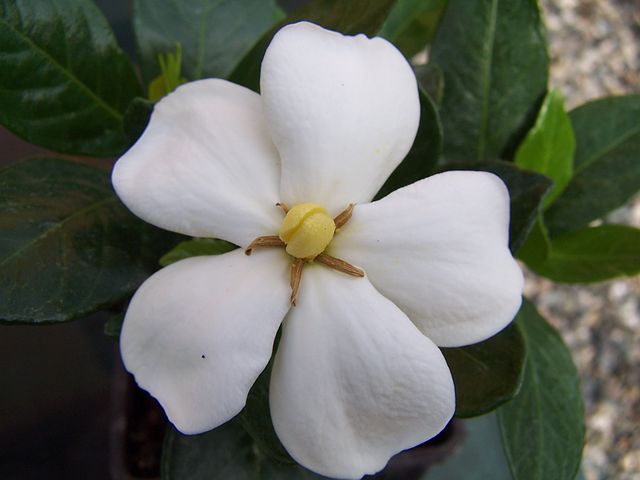How Do You Take Care of Your Gardenias? Tips For Successful Gardening and Growing Of This Amazing Flower!
Gardenias are well-known for their fragrant blooms, beautiful foliage, and loveable personality. They have been around for a long time, but people only started to grow them commercially in the early 20th century. Gardenias are one of the most popular shrubs in the south and can be grown anywhere from near sidewalks to at least 100 feet away from any house or building. However, this stunning beauty is not perfect and needs some care. Here are a few tips to take care of your gardenia plants. Gardenias can be grown outdoors in USDA Plant Hardiness Zones 8–11 and indoors in all other zones.
Table of Contents
Outdoor Gardenia Growing Requirements

Provide Proper Light Exposure
Gardenia can thrive in full light but milder regions. It’s great if it’s covered with organic mulch. In hot areas, it is best to grow your gardenia that is exposed to morning sun within 4 hours and filtered shade in the afternoon. Since the afternoon sun provides intense heat especially in the summer months, they can cause the foliage to burn. Gardenias grow with long, spindly stalks and weak, thin leaves when they are exposed to too much shade. The number of flower buds produced is reduced, and those that do form may break off before they have a chance to bloom. On the other hand, Gardenia flowers that are exposed to too much sunlight wilt more quickly than those that are exposed to some shade.
Water When the Soil Is Dry
In order to survive, gardenias need at least an inch of water every week. The plants should never be allowed to dry out completely, so make sure to water them on a regular basis. If you’re not consistent, the buds and leaves may fall off. Keep the soil damp, but not soaking wet. The fungus attacks the roots when the soil is too wet, allowing air to escape. If the plant’s dark green leaves turn yellow, it could die. Reduce watering during the cold months. Instead of watering your plant with tap water, it’s best to water your Gardenia with rainwater for more nutrient absorption and faster growth.
Provide Required Soil ph Level and Ideal Soil Mixture
Gardenias are acid-loving plants that require soil with a pH between 5 and 6, as well as a high concentration of organic matter to thrive. When planting outside, it’s important to determine the pH of the soil and make any necessary adjustments to ensure that the plant grows in the best possible conditions. In order to meet the acidity that Gardenia needs, use standard potting mixes that have a peat basis in them. When a teaspoon of agricultural sulfur is sprinkled into a planting hole, it may help to reduce the pH of the soil, which is excellent for plant growth. As a substrate for your plants, layer them with peat moss or compost and then cover them with a few inches of mulch to help them retain moisture.
When planting gardenias, avoid heavy, alkaline clay with poor drainage as well as coarse, sandy soils. The optimal mixes consist of equal parts fibrous loam, peat moss, and well-decaying manure, or one-part loam, one-part leaf mold, and one-part well-decaying manure, depending on the situation. Make a hole approximately a foot deep and two feet wide in loam or sandy soil, and fill it with a mixture of the two soil types. Alternatively, if the soil is heavy clay, dig a larger hole and mix in some coarse sand with the previously indicated combination. Some gardeners say that in heavy clay soils, you should dig a 36 inches deep trench and fill the base foot with crushed stone or gravel to improve drainage and allow for more root growth. Gardenias have shallow roots, so prevent planting around the root system once they have established themselves.
Feed Your Gardenia
Gardenias are heavy feeders to a certain extent when grown in light, warm circumstances. Using a 1/4 teaspoon solution of 15-15-15 (Nitrogen, Potassium, Phosphorus) fertilizer diluted in 1 gallon of water once a week, you can feed them to your plants. Feed acid fertilizer to garden plants around the middle of March and again around the end of June.
Using an acidifying fertilizer (such as azalea fertilizer) in the spring, after the cold winter has gone, then feeding them again in mid-summer and late June in four seasoned regions will ensure that the gardenias will bloom in the fall. If you plan to leave your gardenias outside to overwinter, don’t fertilize them in the fall because new growth may be destroyed if temperatures fall below 15 degrees Fahrenheit. Late summer is a good time to stop feeding in order to give new growth enough time to harden off before the cold season starts.
Due to the widespread problem of chlorosis, or yellowing of gardenia leaves, it is recommended that you use a fertilizer that contains both iron and magnesium.
Every three weeks, treat outside container plants with an acidifying fertilizer to keep them healthy. Frequent applications of coffee grounds, which provide a slightly acidic mulch, as well as applications of fish emulsion or blood meal, which can assist in increasing soil acidity, may also be beneficial to plants.
Maintain Temperature
Gardenias are extremely temperature-sensitive. Gardenias thrive in temperatures between 18-21°Celsius during the day and 15-18° Celsius at night. When temperatures outside are too hot or cold, gardenias may start to droop and may lose their leaves. To prevent this from happening, follow these tips:
- Grow your gardenia in a location that receives full sun during the morning but milder light throughout the day.
- When growing your Gardenia outdoors in warmer climates be sure to provide some type of protection such as an overhead covering or using greenhouse lights
Maintain High Humidity Level
A gardenia may flourish in a humid climate with at least 60% humidity. Pine straw, bark, or organic mulch should be applied to the soil at a depth of two to four inches to help retain moisture and inhibit weeds that suck up too much of it.
Indoor Gardenia Care

Light Requirements
When growing gardenias inside, you must ensure that the plant gets at least six to eight hours of bright light every day, seven days a week. It’s best to have a window facing southeast, which lets in a lot of natural light. As a result, the plant will get plenty of sunlight in the mornings and throughout the rest of the day as a result. The plant should not be placed directly on the window ledge of southwest-facing windows, since they may become too hot. Even if the soil is moist, heat and bright sunlight can burn the plant, causing the leaves to droop and eventually killing it. As the seasons change, move your gardenia to a new spot to make sure it gets enough light.
During the scorching summer months, avoid placing your plant under a window because of the risk of sunburn. This causes the foliage to develop a darker shade of brown. The plant may wilt in more extreme conditions. In order to protect the plant from direct sunlight, it is best to place it a few inches away from the window or to cover it with a curtain or blind. Since daylight hours are shorter at this time of the year, a southwest window may be the best option. If the plant isn’t getting as much sunlight as it did in the spring and summer, don’t worry about it. Even if they only get 4 hours of sleep a night, they will be able to make it. Consider using a grow lamp if natural light is insufficient for the plants. This is an excellent method for ensuring that plants receive an abundance of light. If there is not enough light, they will not bloom.
Humidity
Moisture is important for the health of your gardenia because it helps to regulate the plant’s water usage. Too much moisture can lead to mold, while too little moisture can cause the leaves to droop and the plant to die. Gardenias are sensitive to changes in humidity, so be sure that you keep the soil evenly moistened but not soggy. When watering your gardenia, use light misting instead of pouring water onto the plant. Over-watering can also cause problems, including root rot and fungal infestations.
When it comes to humidity levels, allow your gardenia some leeway so that it doesn’t become too dry. If you notice that the leaves are yellow or brownish in color, this may indicate an erosion problem on the surface of the soil where water is being lost through transpiration (the release of water vapor from plant material). A good way to test the humidity levels in your garden is to use a hygrometer.
Water
Watering your gardenia needs to be done in such a way that it does not drown the roots. Over-watering can cause rot and other problems. A good rule of thumb is to water your plants twice per week, but allow them enough time between waterings so that the soil does not get wet again for at least two days.
If you notice drooping or wilting leaves, this may mean that there is not enough moisture in the soil.
Soil
A healthy gardenia plant needs well-drained soil that is free of excess moisture. Gardenias dislike wet feet, so water them only when the top inch or two of the soil feels dry to the touch. Overwatering can cause root rot and other problems. When it comes to gardening, one of the most important things you can do for your plants provides them with good soil composition and drainage. A balanced mix of organic matter and moisture will provide your gardenia with the nutrients it needs and help to prevent problems like root rot. Use well-draining, high-quality, fresh soil to successfully grow gardenias inside. To grow your plants in a good quality potting soil, which should contain coarse sand and peat moss, follow these instructions: Acidic compost, such as ericaceous compost, can be added to the soil to help it retain its acidity while also increasing it slightly. Gardenias benefit greatly from this treatment. Ericaceous compost can be made by combining 20 percent perlite, 10 percent conventional garden potting soil, 10 percent compost, and 10 percent coarse sand in a ratio of 20:10:10:10. Another option for soil is to acquire a rhododendron-specific mix, as this plant has the same soil requirements as gardenias and requires a similar amount of moisture.
Fertilizer
Same as planting outdoor, Gardenias prefer a fertilizer ratio of 15-15-15. (nitrogen, phosphorus, potassium). During the spring and summer months, fertilize your gardenia every two weeks. For plants that demand a higher level of acidity, use a water-soluble fertilizer. Fertilizer should be diluted in order to avoid overdosing on nutrients. Underfertilizing the plant is better than overfertilizing it. Over-fertilization, on the other hand, is more difficult to correct. Plant fertilizer can be purchased in the form of organic fertilizer or you can make your own. The acidity level of anything you use should be high. During the spring and summer months, fertilize the plant once every two weeks. To save time in the fall and winter, this can be reduced to once a month.

What Are the Benefits of Taking Care Gardenia?
There are many benefits of taking care of gardenia plants, including:
- They produce blooms that last for several weeks.
- They are perfect for attracting pollinators to your garden, which will help improve the health of your plants.
- They can improve air quality by removing pollutants from the air.
- They make a great addition to any landscape.
- They provide shade and shelter for other plants.
- They can improve soil quality.
